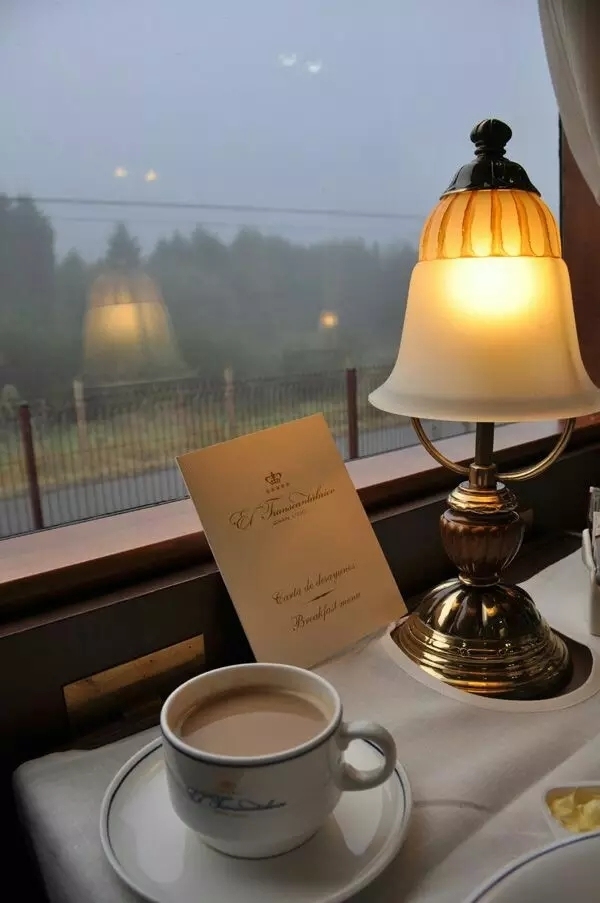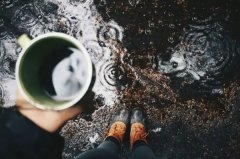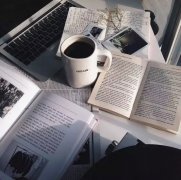Introduction to the production area of single-product beans in Edini Manor, Indonesia, how to brew single-product beans in Edini Manor

Professional barista communication, please pay attention to coffee workshop (Weixin Official Accounts cafe_style)
When ships replaced sailboats, coffee from these islands faced the same problem as Indian coffee from Mysore-consumers were used to coffee affected by long journeys and therefore did not want to accept the taste of "fresh" coffee. To solve this problem, the Indonesian government has tried to imitate coffee affected by long trips, and they have "stored" coffee beans for up to a year. However, the taste of this moist coffee is not widely accepted, so that it affects the good reputation of coffee.
However, Indonesian "storage" coffee or "journey" coffee is still produced today. It is sold under the brand names Old Government, Old Brown and Ool Java.
Although Indonesia produces so much good coffee, it is puzzling that its residents prefer Turkish coffee to its famed European coffee.
[Origin]: Mount Tikukur, West Java?
Altitude: 1400-1600m.
[Breed]: Arabica?
The Arinanis?
[Flowering Period]: March-May, September-November?
[Treatment Method]: Honey Precess Sunlight Treatment?
[Cup Test]: 92 points?
[Flavor]: Mango, red wine, peach juice, intense fruity, with plum and jackfruit flavor, clean and sweet back.
Indonesia's Aimani Manor sun-baked beans, its flavor is not a bit like Indonesia beans, this bean has its own unique strong fruity, mango, red wine, peach juice, as well as plum and jackfruit flavor, clean and sweet back, cup test score of 92 points, let you can not believe that this is a coffee bean from Indonesia. This bean is called Aromanis in Indonesian, meaning sweet mango.
Indonesia Indonesia
Population: 23,742,400
In Indonesia, coffee beans slowly spread from Java to neighboring islands, reaching Sulawesi first in 1750, before extending to northern Indonesia. After planting began around Lake Toba in 1888, it eventually spread to Lake Tawar in the Gayo region in 1924.
SUMATRA
Sumatra has three main cultivation areas: the northern part of Aceh, the area slightly south around Lake Toba, and the recently emerged islands near Mangkuraja. It may also be traced to smaller areas of Takengon, Bener Mariah in Aceh, Lintong, Sidikalang, Dolok Sanggul and Seribu Dolok around Lake Doba. Coffee beans sold in the area were commonly known as "Sumatra Mantenin," but there is no actual place name for Mantenin, which comes from the ethnic name of the local islanders. Usually there are grades of mantenin, classified as Grade1 or Grade2. The grading method is undoubtedly based on cup testing quality rather than the generally believed raw beans themselves. But I'm still skeptical about recommending Grade1, because it seems to be flooding. It's odd to divide the varieties into batches, so most Sumatra beans are a mix of unknown varieties. Sumatra coffee beans are exported through Medan port, but they stay at the port for too long before export, and the hot and humid climate factors will not be conducive to the quality of coffee beans.
Altitude: Aceh 1100-1300m, Doba Lake 1100-1600m, Mangkuraja1100-1300m
Harvest: September-December
Varieties: Typica (including Bergandal, Sidikalang, Djember), Timtim, Ateng, Onan Gajang
JAVA
In Indonesia, this area inherited Dutch colonial customs and customs, so there are more large coffee plantations. The four main coffee fields, covering 4000 hectares, were formerly government estates. Coffee beans from this region enjoyed a reputation for excellence at the time, although I believe that a large number of formula beans have replaced "Mocha-Java" coffee beans not long ago. Java coffee beans used to be high for a long time, but in the 20th century there has been a significant decline in prices. The planting area covers the vicinity of Ijan volcano in East Java and West Java.
Altitude: 900-1800m
Harvest: September-September
Varieties: Typicas, Ateng, USDA
SULAWESI
Even though seven plantations supply about 5 per cent of Sulawesi's production, local production is dominated by smallholder supply. Most Arabica beans are grown high around Tana Toraja, Kalosi in the south is a brand, and two lesser-known areas are west of Mamasa and south of Kalosi, Gowa. There are a few particularly interesting coffee beans that have been washed, which are worth pondering and are highly recommended to try when you have the opportunity. Semi-washing treatment is a common method in Sulawesi, and local production is also quite a lot of Roast beans.
Tana Toraja 1100-1800m, Mamasa 1300-1700m, Gowa average 850m
Harvest: May-November
Breed: S795, Typicas, Ateng
FLORES
Flores is a small island located about 320 km (200 mi) east of Bali, one of the Indonesian archipelagos. As a latecomer to the coffee industry, it has developed a good reputation for growing coffee. In the past, Flores produced coffee that was mostly sold domestically or mixed with other coffees for export, and rarely sold directly under the name "Flores Coffee." There are active and dormant volcanoes on the island, with a mixture of Bajawa volcanoes having a great positive impact on the main cultivation areas. In coffee processing, the semi-wash process is the most common treatment in the region, and some coffee beans are still produced by the full wash process.
Tana Toraja 1200-1800m, Mamasa 1300-1700m, Gowa average 850m
Harvest: May-September
Varieties: Typicas, Ateng, Robusta
BALI
Coffee came to Bali relatively late and was originally grown on the Kintamani plateau. Coffee production was greatly affected by the Gunung Agung eruption in 1963, which killed more than 20,000 people and caused extensive damage to eastern Bali. In the late 1970s and early 1980s, the government distributed Arabica seedlings to boost coffee production, but this was considered to be of limited effect because today about 80 percent of the island's production consists of robusta beans. Although tourism provides the largest revenue, agriculture employs the largest number of people on the island, and Japan used to be the largest buyer.
Altitude: 1,250- 1,700 m
Harvest: May-October
Varieties: Typicas, Typica derivatives, Robusta
Java produces fine aromatic coffee with relatively low acidity, fine taste and good balance. Java coffee has a superior aroma and acidity to Sumatra and Sulawesi coffees. The best plantations in Java are Blawan, Jambit, Kayumas and Pankur. Java mocha coffee is a blend of Java coffee and Yemeni mocha coffee.
Sumatra, Indonesia's second largest island, is the center of Indonesia's oil industry. Rubber and timber on the island are also famous export commodities. Sumatra coffee, however, is more striking, similar to Java coffee, but slightly heavier in size. Mandheling and Ankola coffee beans are also highly valued, with Mandheling even known as the world's most granular coffee beans.
Sulawesi, located between Borneo and New Guinea, is sometimes called Celebes. The coffee produced on the island is full of particles and rich in flavor. The best coffee beans are grown in Kalossi and Rantepao in the south of the island. Among the many tastes, try Celebes Carlochy Coffee.
Overall, Indonesian coffee is strong, mellow, slightly syrupy, and has excellent acidity, reflecting its excellent quality in that its two main export markets are Germany and Japan. What appeals to consumers is the exceptional quality of its arabic coffee beans. You can add milk or cream to high-quality Indonesian coffee without worrying about affecting its taste. Indonesian coffee is divided into six grades, the best is AP. But no one knows exactly what these two capital letters represent.
Important Notice :
前街咖啡 FrontStreet Coffee has moved to new addredd:
FrontStreet Coffee Address: 315,Donghua East Road,GuangZhou
Tel:020 38364473
- Prev

Is the single bean delicious in Indonesia? the planting and processing of single bean in Ai Ni Manor in Indonesia
For professional baristas, please follow the coffee workshop (Wechat official account cafe_style) [Origin]: Mont Tikukur Tiegula Mountain, West Java? [altitude]: 1400-1600m? [variety]: Arabica species? [producer]: Arinanis? [flowering]: March-May, September-November? [treatment]: Honey Precess sun honey treatment? [cup]
- Next

What are the suggestions for baking single peas in Indonesia Edini Manor?
For professional baristas, please follow the coffee workshop (Wechat official account cafe_style) Sumatra, the second largest island in the Indonesian archipelago, is the center of Indonesia's oil industry, and its rubber and wood are also famous for export. However, the coffee in Sumatra is more eye-catching, which is similar to Java coffee, but with slightly heavier grains. Mandheli
Related
- Does Rose Summer choose Blue, Green or Red? Detailed explanation of Rose Summer Coffee plots and Classification in Panamanian Jade Manor
- What is the difference between the origin, producing area, processing plant, cooperative and manor of coffee beans?
- How fine does the espresso powder fit? how to grind the espresso?
- Sca coffee roasting degree color card coffee roasting degree 8 roasting color values what do you mean?
- The practice of lattes: how to make lattes at home
- Introduction to Indonesian Fine Coffee beans-- Java Coffee producing area of Indonesian Arabica Coffee
- How much will the flavor of light and medium roasted rose summer be expressed? What baking level is rose summer suitable for?
- Introduction to the characteristics of washing, sun-drying or wet-planing coffee commonly used in Mantenin, Indonesia
- Price characteristics of Arabica Coffee Bean Starbucks introduction to Manning Coffee Bean Taste producing area Variety Manor
- What is the authentic Yega flavor? What are the flavor characteristics of the really excellent Yejasuffi coffee beans?

